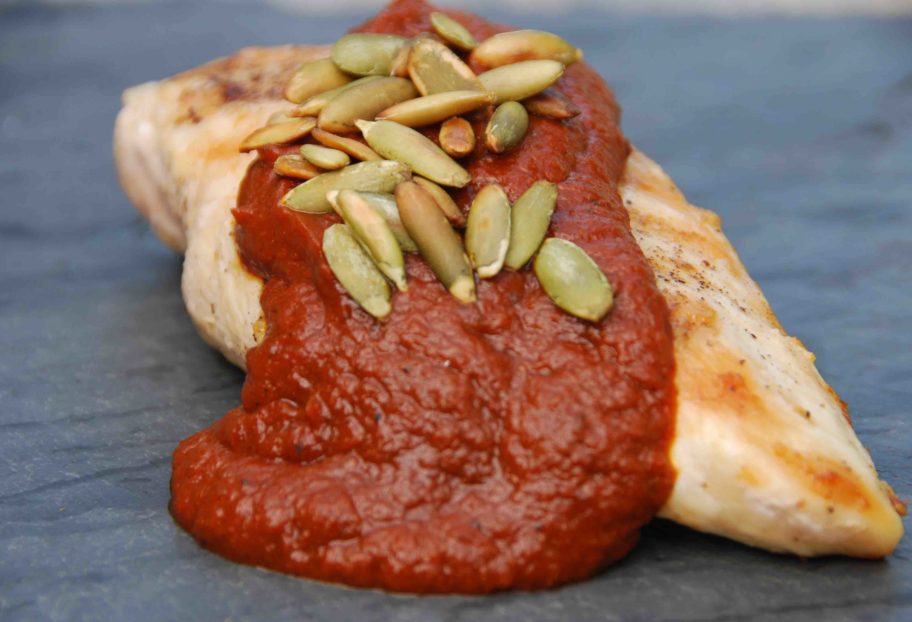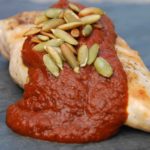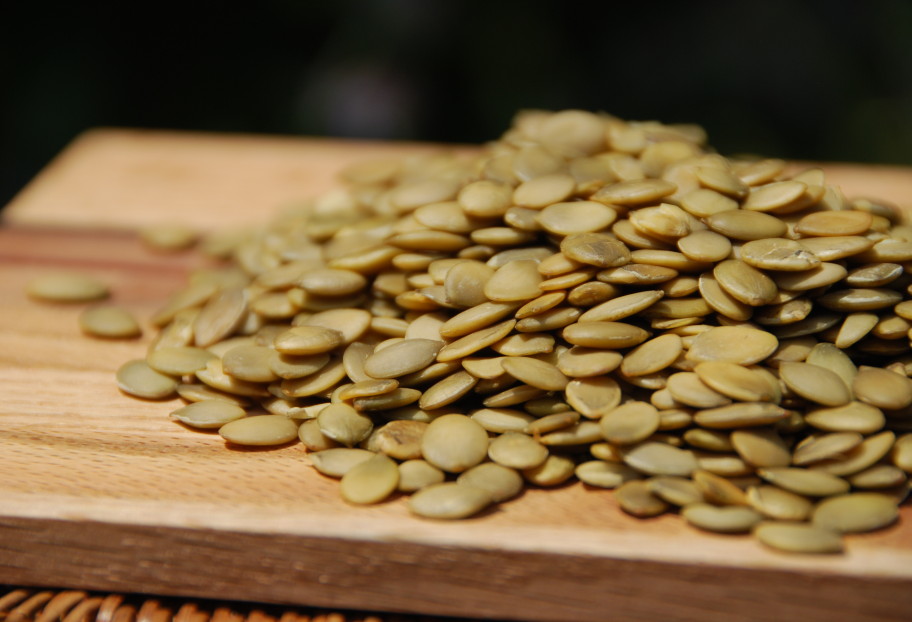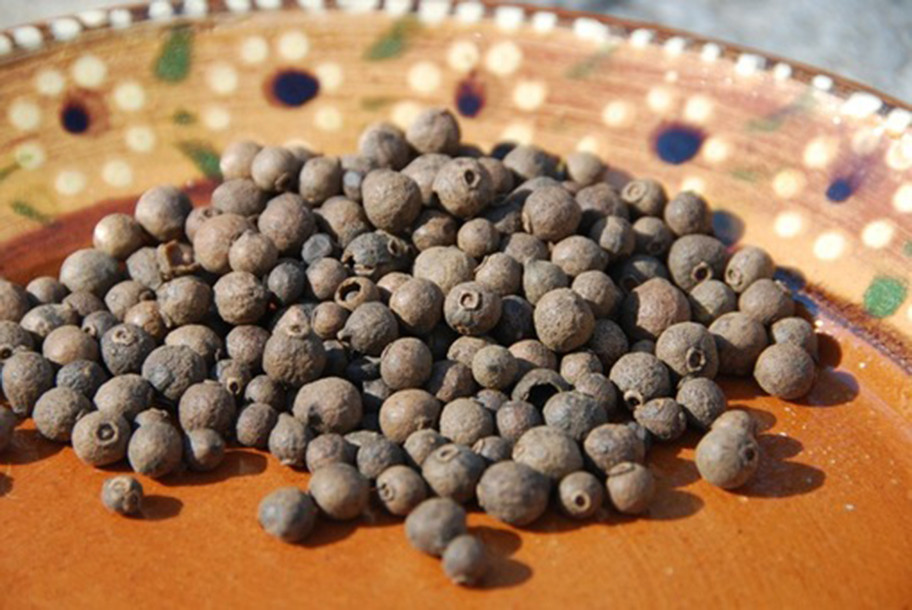You can do fabulous things with pumpkins aside from spooky faces and pumpkin pie… Just ask any Mexican. We have a way with pumpkins.
Native to Mexico, pumpkins have been devoured there for centuries, in their entirety. The seeds are addicting as snacks, used as a hefty base for salsas, soups and sauces and more recently sprinkled on top of many dishes. The pumpkin meat is used for soups and stews, and along with the entire rind cooked in a piloncillo syrup, becoming a traditional favorite known as Tacha.
Yet there is something else you can make with those fall pumpkins: Mole!
An easy to make, silky textured and exquisite tasting mole sauce, that can bathe anything you can think of. From chicken to meat, fish, seafood and veggies; it all goes beautifully swaddled in it. I like it mostly with chicken or turkey, which is how I am most used to eating thick and rich Mole sauces….
So that you can try it too, here it goes.
As simple as it is to make, it uses two ancient and crucial techniques of Mexican cooking that enhance the flavors of the ingredients and bring a ton of personality to a dish: charring and toasting.

First the onion and garlic take a quick turn under the broiler to be charred. Their sharp, crisp and pungent flavors become transformed…
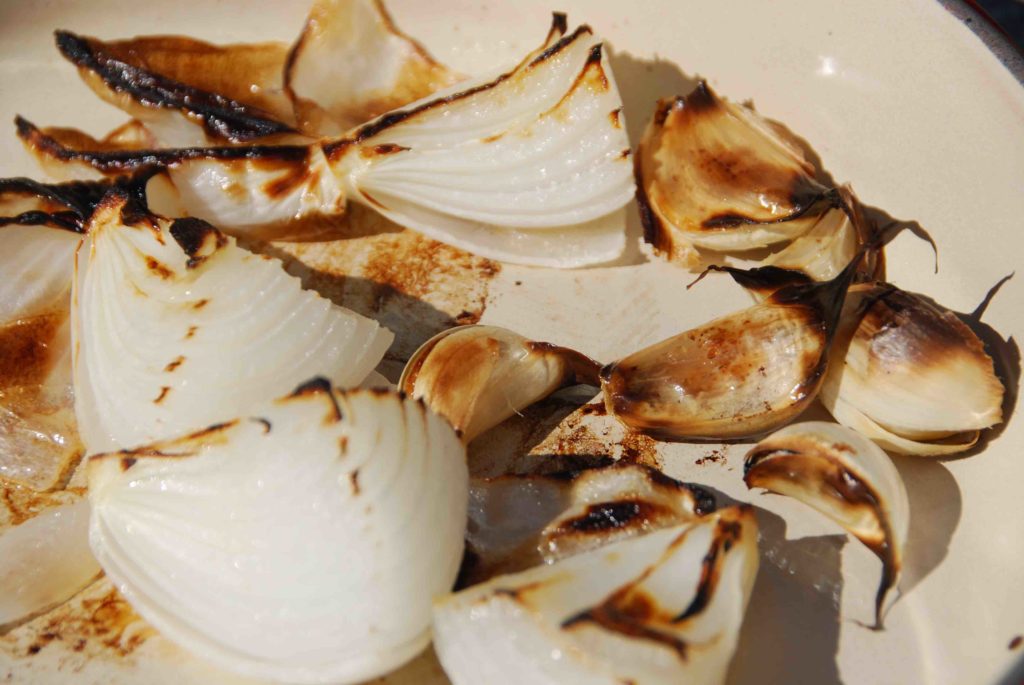
…as if their alter ego came out to show depth and sweetness. While at the same time becoming a bit rustic.
Then the ancho chiles, almonds, cinnamon, allspice and whole cloves take a turn either in a skillet or comal, to lightly toast.
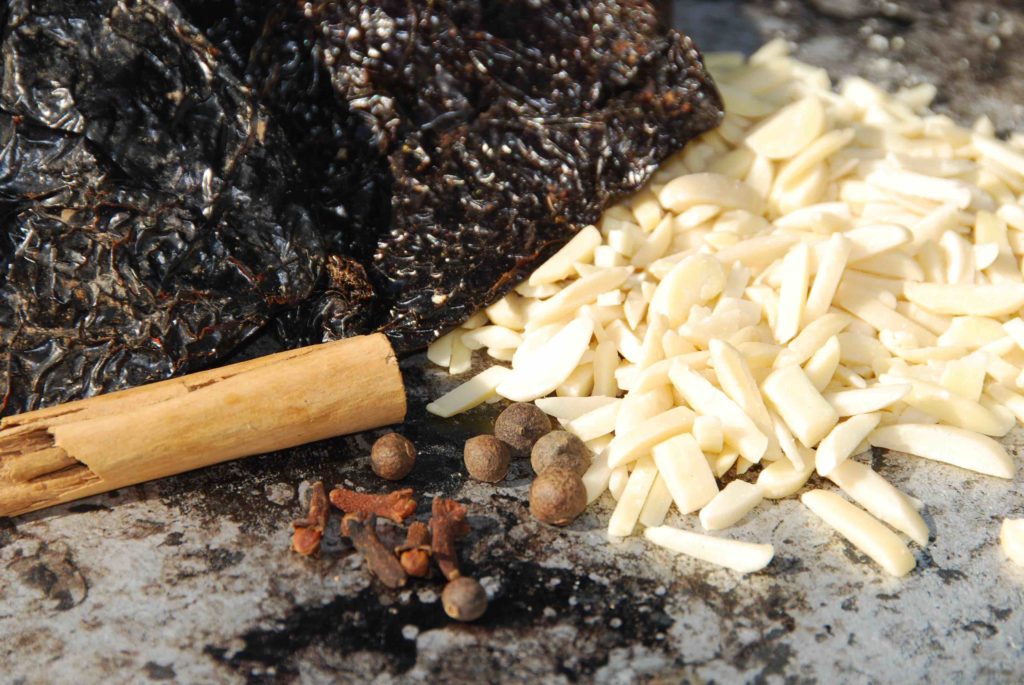
Toasting them intensifies and deepens their flavor, it releases new aromas and adds a kind of warmth to the dish.
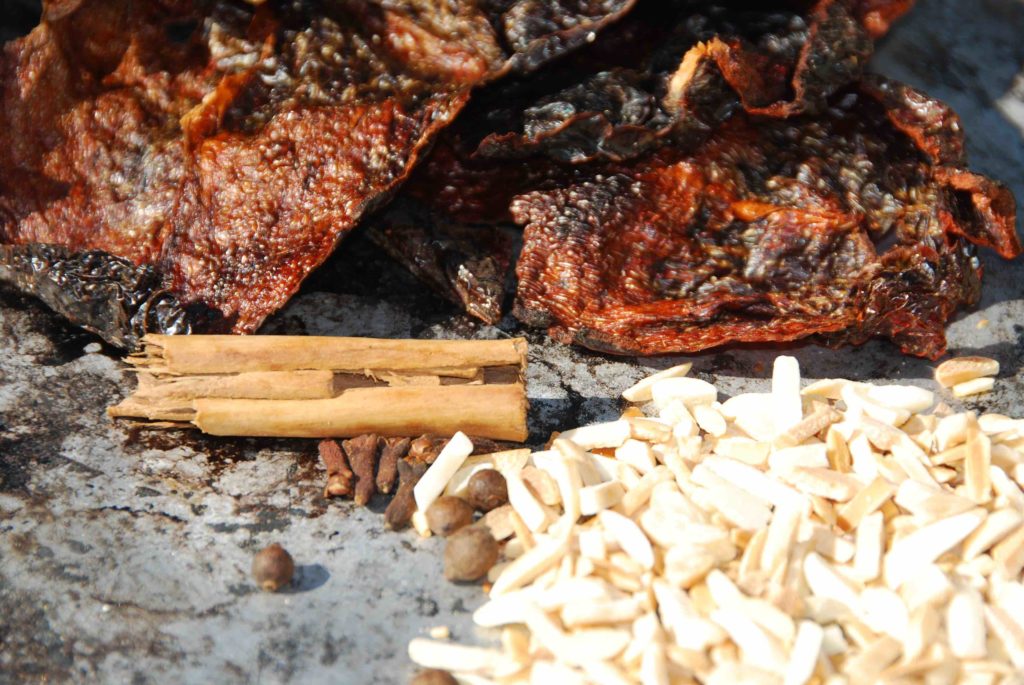
As the chiles have been dried for a long time, aside from giving them a light toast, you need to rehydrate them and plump them back to life. And it takes just 10 minutes of soaking them in a hot bath.
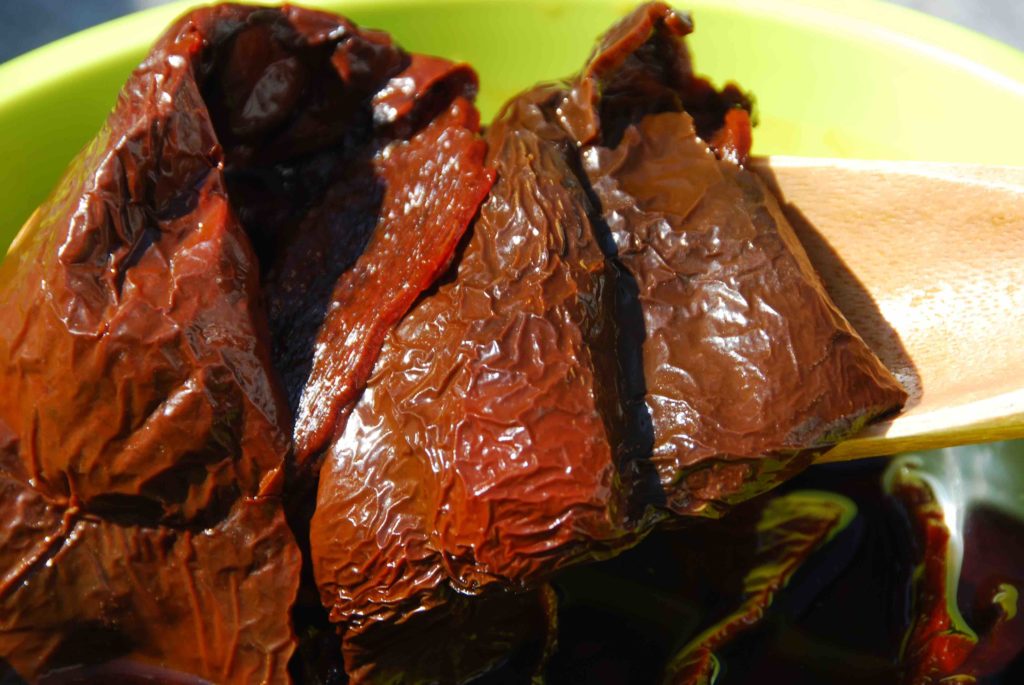
Then you also use that water from the chile bath, as it has some of the intense flavors and colors of the chiles, as well as the chiles to make the Mole Sauce.
Then everything in the blender goes!
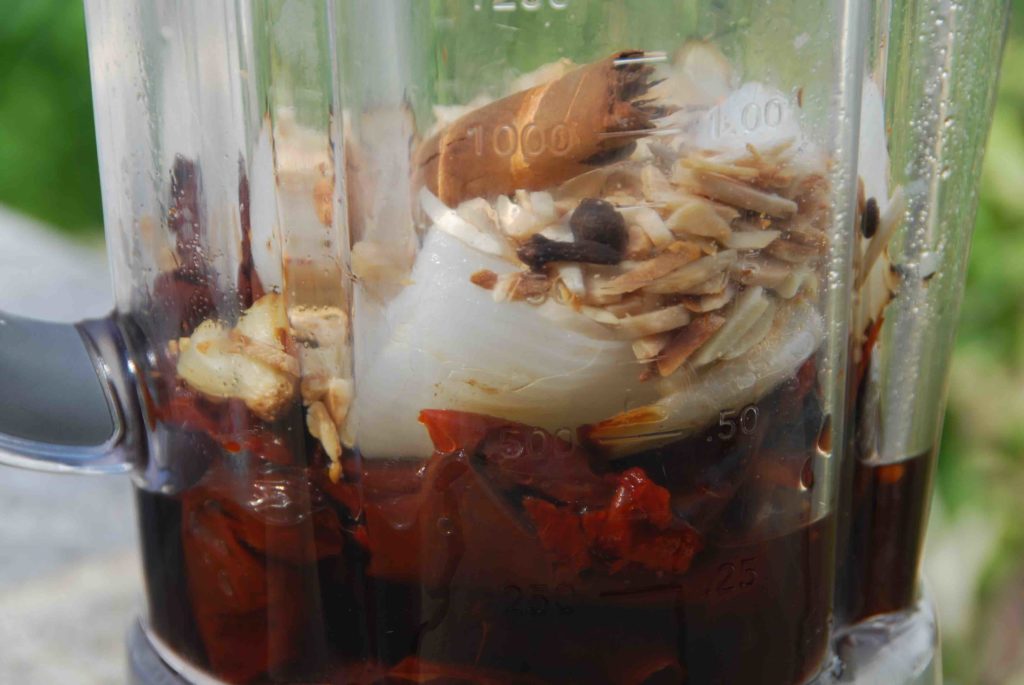
If you used True or Ceylon cinnamon, puree it along with the rest of the ingredients. As it is light and thin, it crumbles and purees easily. It is gentle and kind to the blades of the blender. If you only found the hard Cassia kind, use it to simmer in the mole sauce further on.
Then you add it all along with the pumpkin puree in a big pot. You can use already made pumpkin puree from the store…
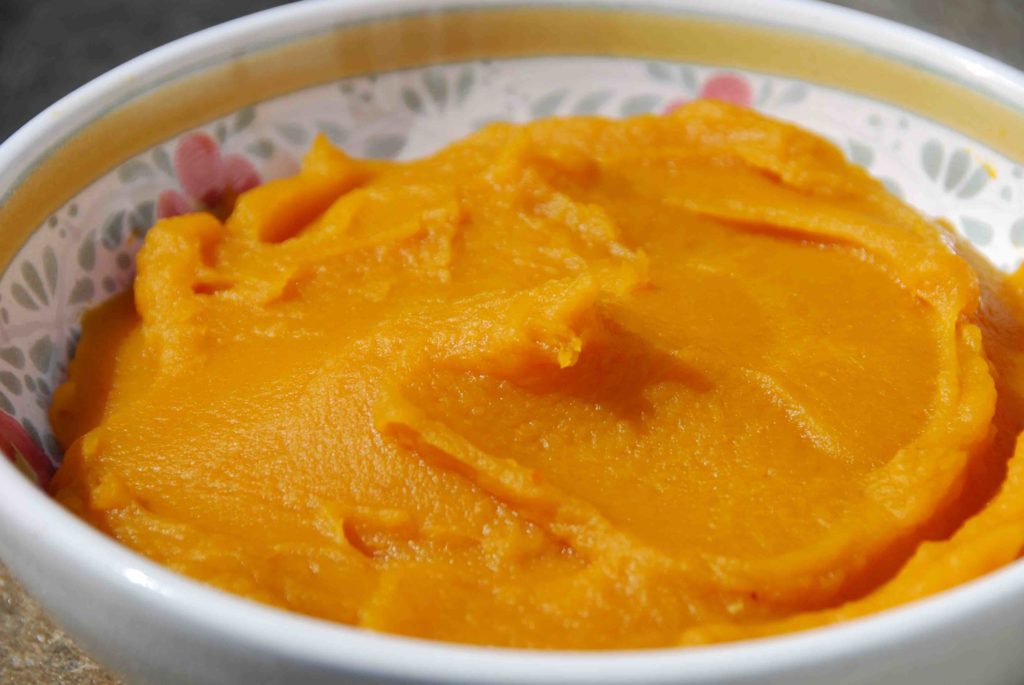
Or make your own pumpkin puree with those extra pumpkins that are sitting on your front porch… Making the puree is pretty simple: Quarter the pumpkin, remove the seeds and fibers, roast in the oven at 400 ºF until soft and process the pumpkin meat in a blender of food processor until smooth.
After you simmer the pumpkin puree along with the ancho chile puree (that has the charred and toasted ingredients), it will look like this. Incredibly rich, just like its flavor.
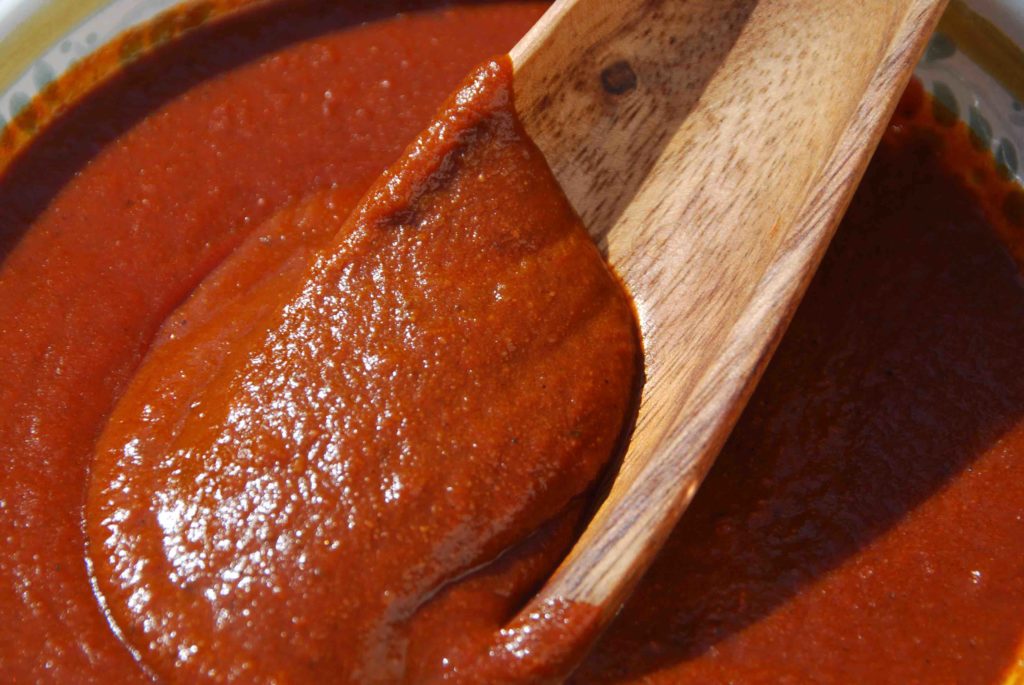
You can make the Pumpkin and Ancho Chile Mole ahead of time, and just heat it when you are ready to serve it.
Topping it with toasted pumpkin seeds makes the dish all the more fabulous. You can taste it already, right?
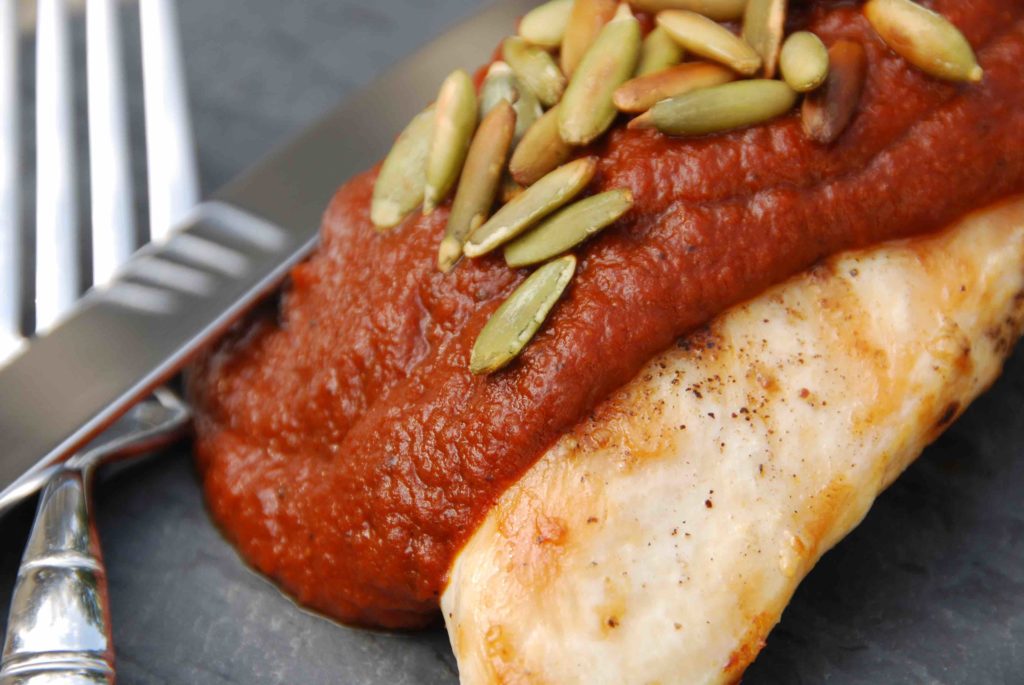
Pumpkin and Ancho Chile Mole
Ingredients
- 1/2 white onion peeled, charred or broiled
- 6 garlic cloves charred or broiled, peeled
- 3 ancho chiles stemmed, seeded and opened
- 1/4 cup slivered almonds
- 5 whole cloves
- 1/2 stick true or ceylon cinnamon about 1 inch (or substitute for 1/2 teaspoon ground cinnamon)
- 8 whole allspice berries or 1/8 teaspoon ground
- 2 tablespoons vegetable oil
- 1 15-ounce can pumpkin puree about 1 3/4 cup
- 3 cups chicken broth
- 1 1/2 teaspoon kosher or sea salt or more to taste
- 3 tablespoons brown sugar or more to taste
- 1/2 cup pumpkin seeds lightly toasted
Instructions
- Place the onion and garlic in a baking sheet under the broiler. Char for 9 to 10 minutes, flipping once in between. Once they are soft and charred, remove from the heat. When the garlic is cool, peel.
- In an already hot skillet or comal set over medium-low heat, toast the ancho chiles for about 15 to 20 seconds per side, until they brown and crisp without burning. Place toasted ancho chiles in a bowl covered with boiling water. Soak for 10 to 15 minutes until they are plumped up and rehydrated.
- In the same skillet or comal, toast the cloves and all spice until aromatic, about a minute. Remove from the heat. Toast the almonds and cinnamon, stirring often, until lightly browned, 4 to 5 minutes.
- Place the onion, garlic, chiles, 1/2 cup of chile soaking liquid, almonds, cloves, cinnamon and allspice in the blender and puree until smooth.
- In a soup pot or casserole, heat the oil and pour the pureed mixture over medium heat. Add the salt and sugar. Cook for about 5 minutes, stirring frequently to help prevent the sauce from sticking to the bottom of the pan. The color will darken considerably.
- Add the pumpkin puree and chicken broth to the sauce. Stir well until the pumpkin puree has dissolved, it will have a silky consistency. Continue to cook for about 12 minutes, stirring occasionally.
- Use the mole sauce to pour over grilled, broiled or boiled chicken, meat or fish. Sprinkle with toasted pumpkin seeds for some added flavor and crunch.

